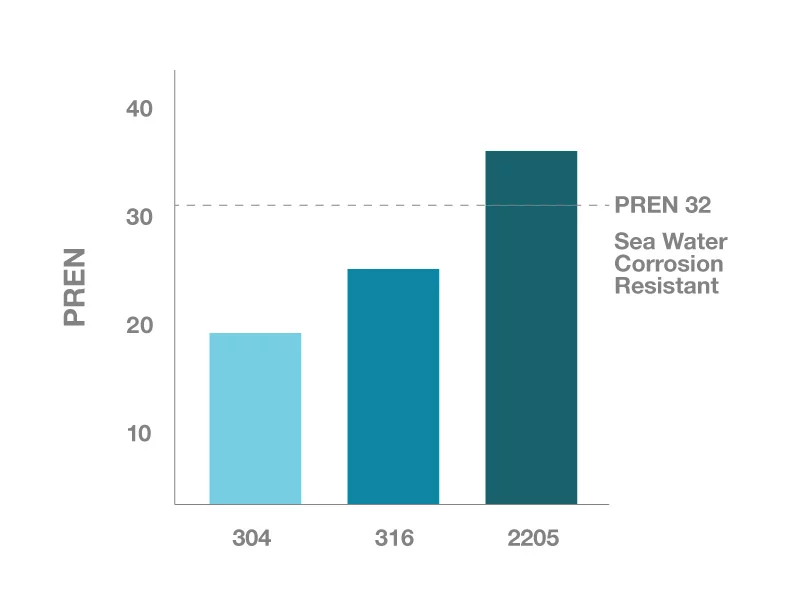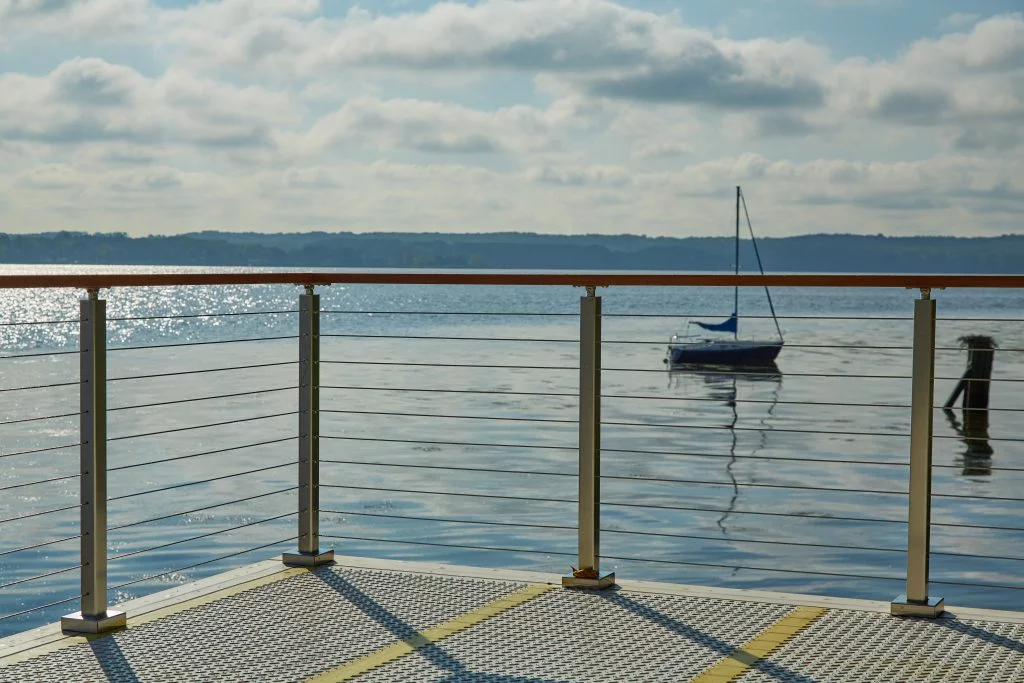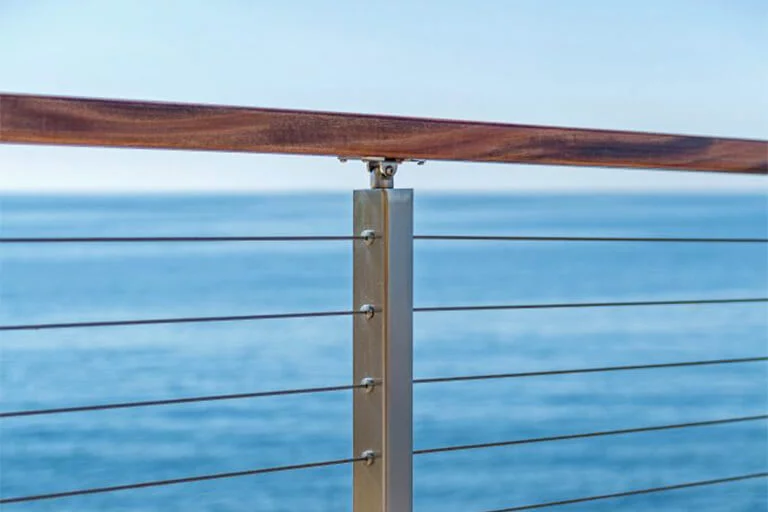Why is Stainless Steel Important for Deck Railing?
Stainless steel is a cornerstone in home design & Deck Railing. Many have it all over their kitchen or perhaps on the bathroom fixtures & it’s incredibly important decking material for coastal environments, even our cable railing wire is made of stainless steel. But most aren’t familiar with 2205 Stainless Steel. Actually, it wasn’t until a metal corrosion conference in the summer of 2017 that we learned more about this incredible metal.
At the conference, most attendees were from the oil and gas industry. Since the oil industry works in a primarily coastal environment it’s not surprising that they are familiar with the most corrosion resistant materials, since entire livelihoods and ecosystems depend on it.
At dinner one evening, Len Morris, the owner of Viewrail, met with many of the oil and gas representatives. During the conversation one representative casually mentioned 2205 Stainless Steel. “What’s that?” Len asked. He had no idea that that question would fundamentally alter how he thought about corrosion resistance for railing.
What is 2205 Stainless Steel?
2205 stainless steel is a metal alloy comprised of specific elements that improve corrosion resistance better than other types of steel. The “2205” refers to the specific alloy used to make-up the material. All stainless steels are in fact made up of various materials like copper and zinc. When you mix different materials and the amount of those materials, you get different alloys, like 304, 316, and 2205. Each of these alloys have different corrosion resistance levels, which the steel industry created an index to measure, called the Pitting Resistance Equivalency Number (PREN).
For an alloy to be fully corrosion resistant to contaminants like salt water, they need to score a 32 or higher on the PREN index. As you can see from the graph below, 316 Stainless Steel scores only at a 25, making it susceptible to corrosion. We still use 304 Stainless Steel, which scores at a 20, but only in interior applications or in environments at least 5 miles from saltwater. On the other hand, 2205 scores at a 34, making it fully corrosion resistant to salt water contaminants.
In short, 2205 Stainless Steel is going to be more durable, longer lasting, and safer in the long-term. That’s why 2205 stainless steel helps bridges that travel over brackish waters and deep sea oil rigs. It’s the best material for the job.
We do not recommend stainless steel posts be used in exterior coastal environments in the Long Island or coastal Connecticut areas, as we have found that to be an extremely corrosive environment that stainless steel cannot hold up to. We recommend using our Superior Performance Powder Coated aluminum posts in these environments as they will perform best in extreme conditions.
What Makes 2205 Stainless Steel Different from 316?
Most of us in the railing industry have relied on 316 Stainless Steel as the most corrosion resistant product available in the railing industry. It’s been the gold standard for 25+ years. But, as we put the 316 into the harshest, most corrosive environments, we ended up getting warranty claims anywhere between 3 months and 3 years later.
When our team went out to these areas, they noticed pitting at the tops of the post and lines of corrosion beginning at the holes of the posts, natural places for contaminants to be able to sit and begin corroding. We made a few changes to our product to lessen the likelihood of corrosion. Then, changing to 2205 stainless steel, we refinished several projects that used 316 and rusted. The results have been tremendous.
Railing with 2205 Stainless Steel
We manufacture our 2” Square Posts, ¼” Rods Infill, and 1” x 2” handrail out of 2205 Stainless Steel. This combination is the new standard when it comes to a corrosion resistant, elegant railing system.
Learn more about stainless steel rod railing. You can also fill out a design help form by clicking the button below or call us at (574) 742-1030 to speak with one of our experts.


